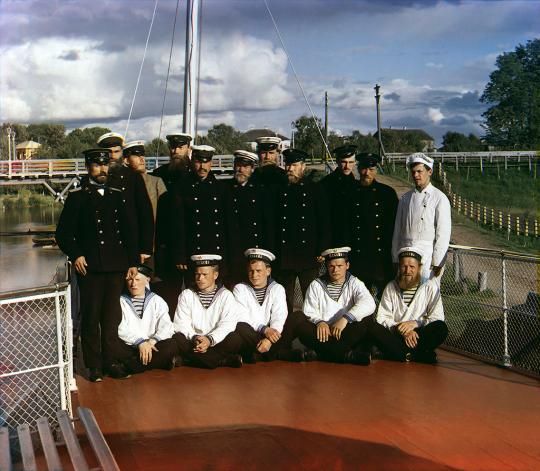|
|
History: Color Photography By Sergey Prokudin-Gorsky, Russia, 1915
|
For example, f/8 at 8 ms (1/125th of a second) and f/5.6 at 4 ms (1/250th of a second) yield the same amount of light. The chosen combination has an impact on the final result. The aperture and focal length of the lens determine the depth of field, which refers to the range of distances from the lens that will be in focus. A longer lens or a wider aperture will result in "shallow" depth of field (i.e. only a small plane of the image will be in sharp focus). This is often useful for isolating subjects from backgrounds as in individual portraits or macro photography. Conversely, a shorter lens, or a smaller aperture, will result in more of the image being in focus. This is generally more desirable when photographing landscapes or groups of people. With very small apertures, such as pinholes, a wide range of distance can be brought into focus, but sharpness is severely degraded by diffraction with such small apertures. Generally, the highest degree of "sharpness" is achieved at an aperture near the middle of a lens's range (for example, f/8 for a lens with available apertures of f/2.8 to f/16). However, as lens technology improves, lenses are becoming capable of making increasingly sharp images at wider apertures.
Image capture is only part of the image forming process. Regardless of material, some process must be employed to render the latent image captured by the camera into a viewable image. With slide film, the developed film is just mounted for projection. Print film requires the developed film negative to be printed onto photographic paper or transparency. Digital images may be uploaded to an image server (e.g., a photo-sharing web site), viewed on a television, or transferred to a computer or digital photo frame.
Photography is the result of combining several different technical discoveries. Long before the first photographs were made, Chinese philosopher Mo Ti and Greek mathematicians Aristotle and Euclid described a pinhole camera in the 5th and 4th centuries BC. In the 6th century CE, Byzantine mathematician Anthemius of Tralles used a type of camera obscura in his experiments Ibn al-Haytham (Alhazen) (965–1040) studied the camera obscura and pinhole camera, Albertus Magnus (1193/1206-1280) discovered silver nitrate, and Georges Fabricius (1516–1571) discovered silver chloride. Daniel Barbaro described a diaphragm in 1568. Wilhelm Homberg described how light darkened some chemicals (photochemical effect) in 1694. The novel Giphantie (by the French Tiphaigne de la Roche, 1729–1774) described what can be interpreted as photography.
|
|









